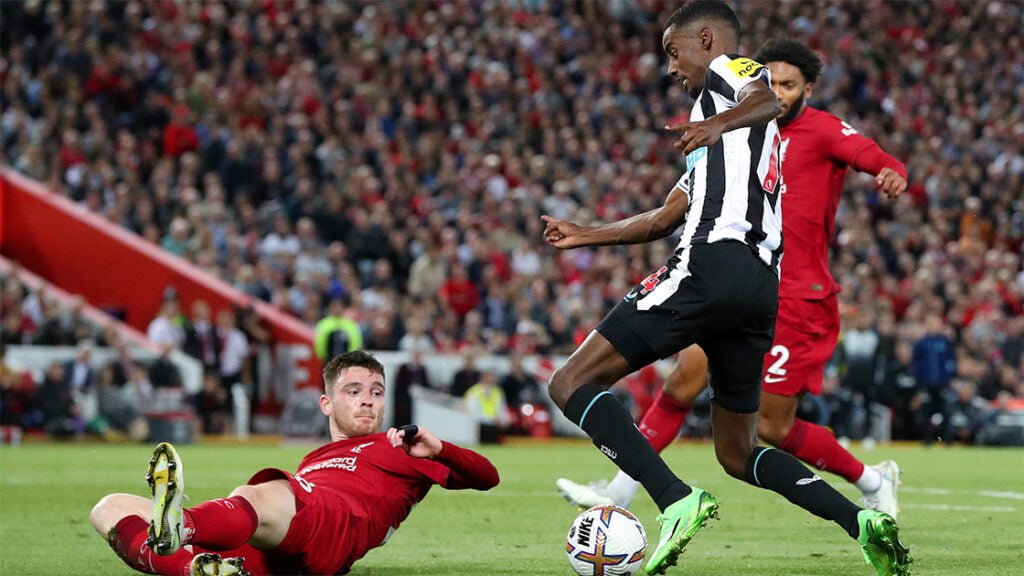Arsene Wenger new offside rules to get Premier League approval?
Some of the latest controversies with VAR have reminded me that a couple of years ago, Arsene Wenger began advocating for a change to the offside rule, something that has gathered momentum to the point that his proposal is currently being trialled in Sweden and Italy.
I’ve never really considered the origins of the offside rule. And, it has always infuriated me when some have claimed that it’s too difficult to explain, especially to those who aren’t particularly interested in association football.
The reality is, the offside rule has withstood the test of time, with relatively few changes since it originated in 1863, although when changes have occurred, it has been to the benefit of those on the offensive.
It was in 1866 when a player was first considered offside unless three players of the opposing team were in front of him (including the goalkeeper). Prior to that, a player had been considered offside if he was level with or ahead of the ball when his team had possession. I hadn’t realised this and no wonder some bright spark felt a change was needed!
Shortly afterwards, in 1873, the rule was modified to the extent a player would be judged offside at the point the ball was played forward (previously, they were judged to be offside when receiving the ball). This allowed forwards the latitude to make a run behind defenders when the ball was passed.
Thirty years later, in 1903 the offside rule was changed to further liberalise attacking play with the law now stating that a player wasn’t considered offside just because that player was in an offside position. Other changes, first to limit offsides to the attacking half, followed by eliminating being offside from a throw in, were introduced in 1907 and 1921 respectively.
The three player rule, introduced in 1873 was abandoned in favour of the two player rule that we all know and love in 1925, when a player was now considered offside unless two players of the opposing team were in front of him (including the goalkeeper).
It then took sixty five years, for the rule to be relaxed such that a player would not be considered offside if he was level with the second to last player of the opposing team (including the goalkeeper). That was in 1990, at a time when it was felt the 1980s had heralded a more defensive brand of football. How ironic the World Cup that year was hosted where ‘cattenacio’ had become something of an art form.
Hands and arms (but not armpits, more of that later) were removed from the offside rule in 2005, together with the clarification of three definitions of ‘involvement in active play’.
– Interfering with play was defined as ‘playing or touching the ball passed or touched by a team mate’.
– Interfering with an opponent was now defined as ‘preventing an opponent from playing or being able to play the ball by clearing obstructing the opponents line of vision or movements or making a gesture or movement, which in the opinion of the referee, deceives or distracts an opponent’.
– The final clarified definition stated ‘gaining an advantage by being in that position means playing a ball that rebounds to him off a goalpost or the crossbar having been in an offside position or playing a ball that rebounds to him off an opponent having been in an offside position’.
Straightforward? Just about. And apologies if I’ve missed anything.
Back to Arsene Wenger.
These days, with the advent of VAR, we are now so far away from what our forefathers had intended, that an armpit or a big toenail is often the difference between a perfectly good goal and sheer exasperation. Anyone recall Isak’s second at Anfield in August 2022?

Yes, it still rankles!
Arsene Wenger, who is FIFA’s chief of global football development, has proposed something that pushes the boundaries of the two player offside rule even further. The ex Arsenal manager would like to see players judged to be onside if any body part is level with the second last defender (although the proposal discludes hands and arms).
Despite my hatred of VAR, with the advent of automated offside calls providing a more accurate measure of decisions, I believe that precise rule changes can be practical.
For me, Wenger’s rule change will open up play, with darting runs previously on the margins now counting. Arsene Wenger draws on research commissioned by the Premier League which suggests offsides would be cut in half, with more goals seemingly inevitable.
If more goals count, I’d wager there’d be greater levels of excitement. In fact, I’d go as far as saying it would also cut the number of VAR decisions that have sucked the spontaneity out of seeing your team put the ball in the back of the net.
Whilst there’d still be marginal decisions, these would now consider the armpit or big toenail in reverse and as the Premier League’s research shows, with fewer offside calls there’d be fewer decisions needing that full on inquisition from Stockley Park.
I for one am hoping that Wenger’s proposal becomes a reality sometime soon.
I wonder who will be the first Newcastle United player to benefit? HTL.


Add Comment